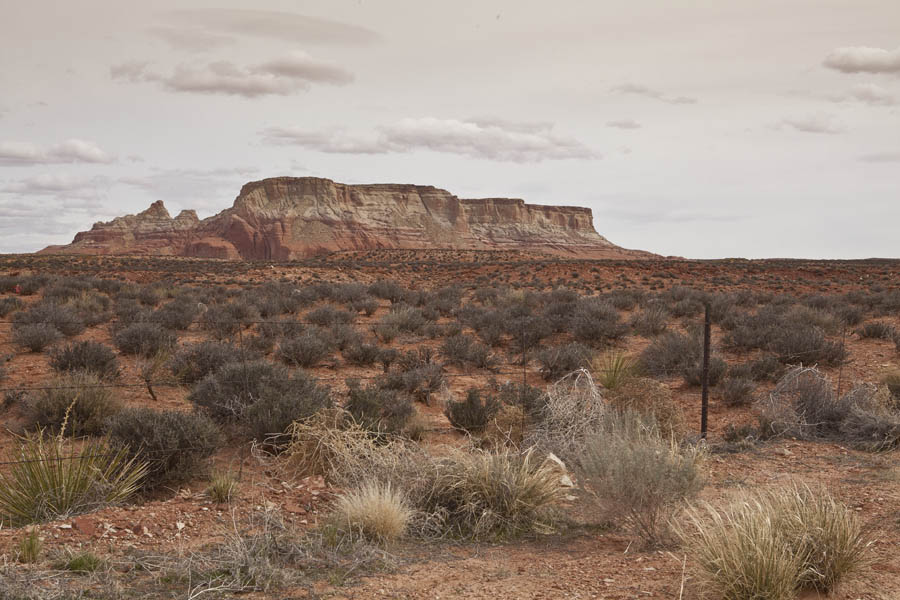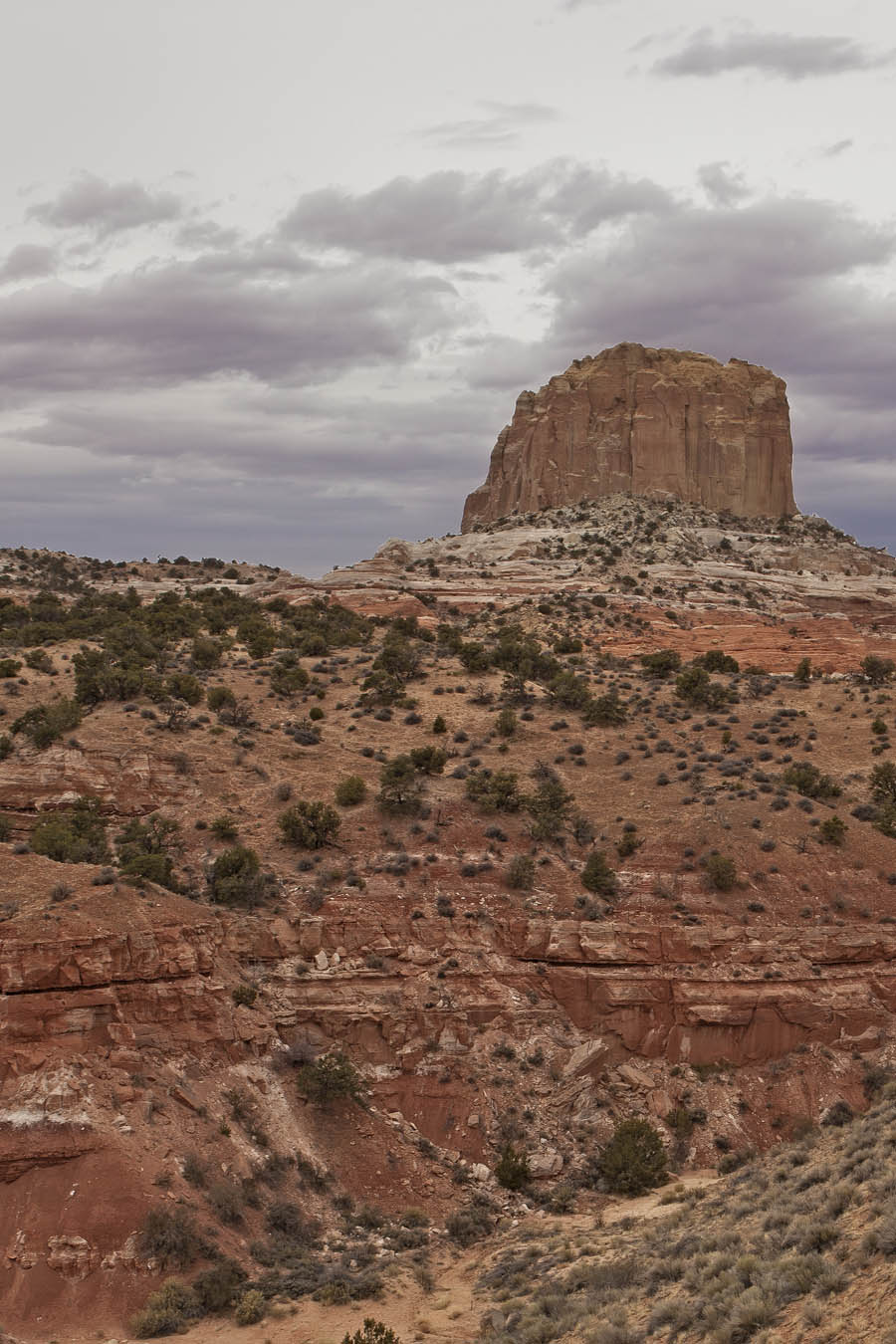Today’s post features a variety of scenes taken during my recent travels in Northern Arizona. They were photographed at several stops we made on our return trip from Page. The first two show some typical terrain just south of Page along Route 98, beginning with this shot of a mesa, an isolated flat-topped hill with steep sides, found in landscapes with horizontal strata. The stratified structure of the mesa is quite visible, the result of deposition of sediments which formed the Colorado Plateau, once inundated with tropical seas. The seas retreated and the area has been sculpted by wind and water into the shapes we see today. The Colorado Plateau is referred to as high desert. In this location we reached elevations close to 8000 ft. (2438 metres).

Another common feature of the desert landscape in Northern Arizona is buttes. Sometimes confused with mesas, buttes are similar structures but much narrower. This particular butte sits just above a gorge, carved by the water from seasonal, torrential rains.
The sandstone structure of mesas and buttes can exhibit many colors, but landscapes of the American Southwest that exhibit such striking shades of red have been informally called “red rock country”. The rock unit called the Navajo Sandstone features prominently in this landscape, and contains some of the largest and most abundant iron concretions found anywhere in the world

The next area we traversed is called the Painted Desert, referring of course to the mix of colours in the stratified layers of the buttes and mesas. These layers include a wide variety of colours, bright reds, white, grey and tones of brown. The Painted Desert extends roughly from Cameron-Tuba City, Arizona southeast to past Holbrook, Arizona and the Petrified Forest National Park. The dimensions are approximately 120-miles in length, and a width of about 60-mi, making it roughly 7,500 square miles (19,425 km2). On this day, we skirted the western edge traveling south along Route 89 to Flagstaff. The pictures of the Painted Desert are quite similar and I have included them as a slideshow. Click on the right side to advance, on the left to back up.
The light was quite flat on this day, not the best for bringing out the vivid colours of the desert. Looking on the bright side, the clouded skies were, in some instances very dramatic and a good complement to the desert landscape. You can’t always choose your weather, so you make the best of what you have. One of the challenges of photography.

